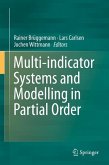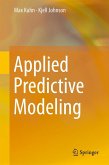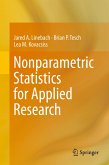Thus multi-indicator systems come into play. We gather indicators which help to characterize the items of interest for ranking. Measurement of indicators, selecting indicators, testing indicators. And we arrive at a multi-indicator system.
We have gathered useful information for ranking. However, we do not know how to derive ranking from the multitude of valuable information. In a popular approach, the indicator values are weight-averaged. The resulting weighted averages are used to obtain the ranking.
We offer the mathematical tool of partial order as a tool to get insight into the process, starting with the multi-indicator system and finishing up with ranking. Application of partial order involving multi-indicator systems is in its initial phases and is advancing with more and more tools.
This book provides a timely introduction to the partial order theory and its techniques with worked out illustrations and applications to a variety of live case studies. It is written for interested social and technical scientists, statisticians, , computer scientists, and graph theorists, stakeholders, instructors, and students at graduate and senior undergraduate levels. We have enjoyed writing it. You will hopefully enjoy reading it and using it.
Dieser Download kann aus rechtlichen Gründen nur mit Rechnungsadresse in A, B, BG, CY, CZ, D, DK, EW, E, FIN, F, GR, HR, H, IRL, I, LT, L, LR, M, NL, PL, P, R, S, SLO, SK ausgeliefert werden.
"The main aim of the book is to introduce the modern tools and methodologies of the so-called partial order ranking for prioritization of objects by many different characteristics. ... is addressed to graduate students and specialists in environmental, ecological, and other applied sciences requiring ordering and prioritization of many objects by numerous characteristics. ... these new methods of partial order analysis can be insightful and useful, and extend the regular tool-kit of statisticians applying more conventional methods of PCA, factor analysis, data clustering, and segmentation." (Stan Lipovetsky, Technometrics, Vol. 54 (2), May, 2012)









